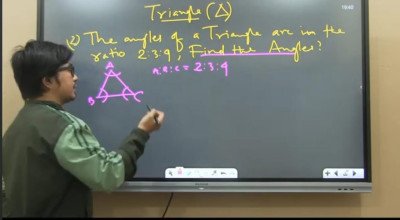Course description
In the context of Class 8 mathematics, comparing quantities is often introduced as a part of the syllabus covering topics related to ratios, proportions, percentages, and applications of these concepts in real-life situations. Here's a breakdown of what students typically learn in this area:
Ratio and Proportion:
Understanding what ratios are and how they represent the relationship between two quantities.
Solving problems involving ratio and proportion, such as finding unknown quantities given a ratio or determining if two ratios are equivalent.
Applying ratio and proportion concepts in various contexts, such as mixing ingredients, sharing in a group, or solving problems related to maps and scale drawings.
Percentage:
Learning the concept of percentages and how they relate to fractions and decimals.
Calculating percentages of a given quantity, including finding the percentage increase or decrease.
Solving problems involving percentage change, discounts, mark-ups, simple interest, and compound interest.
Profit, Loss, and Discount:
Understanding the concepts of cost price, selling price, profit, loss, and discount.
Solving problems related to calculating profit or loss percentage, finding the selling price or cost price when the other values are given, and determining the discount offered.
Comparing Quantities:
Comparing quantities using ratios, proportions, or percentages.
Analyzing situations involving two or more quantities and determining which is greater, lesser, or if they are equal.
Solving word problems that require comparing quantities in various real-life scenarios, such as comparing speeds, ages, prices, or quantities of different items.
ক্লাস 8 গণিতের পরিপ্রেক্ষিতে, পরিমাণের তুলনা প্রায়ই অনুপাত, অনুপাত, শতাংশ এবং বাস্তব জীবনের পরিস্থিতিতে এই ধারণাগুলির প্রয়োগ সম্পর্কিত বিষয়গুলিকে কভার করে সিলেবাসের একটি অংশ হিসাবে চালু করা হয়। শিক্ষার্থীরা সাধারণত এই এলাকায় কী শিখে তার একটি ব্রেকডাউন এখানে দেওয়া হল:
অনুপাত এবং অনুপাত:
অনুপাতগুলি কী এবং কীভাবে তারা দুটি পরিমাণের মধ্যে সম্পর্ককে উপস্থাপন করে তা বোঝা।
অনুপাত এবং অনুপাত সম্পর্কিত সমস্যাগুলি সমাধান করা, যেমন একটি অনুপাত দেওয়া অজানা পরিমাণ খুঁজে পাওয়া বা দুটি অনুপাত সমান কিনা তা নির্ধারণ করা।
বিভিন্ন প্রসঙ্গে অনুপাত এবং অনুপাতের ধারণাগুলি প্রয়োগ করা, যেমন উপাদানগুলি মিশ্রিত করা, একটি গোষ্ঠীতে ভাগ করা, বা মানচিত্র এবং স্কেল অঙ্কন সম্পর্কিত সমস্যাগুলি সমাধান করা।
শতাংশ:
শতাংশের ধারণা এবং তারা ভগ্নাংশ এবং দশমিকের সাথে কীভাবে সম্পর্কযুক্ত তা শেখা।
একটি নির্দিষ্ট পরিমাণের শতাংশ গণনা করা, শতাংশ বৃদ্ধি বা হ্রাস সহ।
শতাংশ পরিবর্তন, ডিসকাউন্ট, মার্ক-আপ, সাধারণ সুদ, এবং চক্রবৃদ্ধি সুদ জড়িত সমস্যা সমাধান করা।
লাভ, ক্ষতি এবং ছাড়:
খরচ মূল্য, বিক্রয় মূল্য, লাভ, ক্ষতি এবং ছাড়ের ধারণাগুলি বোঝা।
লাভ বা ক্ষতির শতাংশ গণনা করার সাথে সম্পর্কিত সমস্যাগুলি সমাধান করা, অন্যান্য মান দেওয়া হলে বিক্রয় মূল্য বা খরচ মূল্য খুঁজে বের করা এবং প্রস্তাবিত ছাড় নির্ধারণ করা।
পরিমাণের তুলনা:
অনুপাত, অনুপাত বা শতাংশ ব্যবহার করে পরিমাণের তুলনা করা।
দুই বা ততোধিক পরিমাণ জড়িত পরিস্থিতি বিশ্লেষণ করা এবং কোনটি বেশি, কম বা সমান হলে তা নির্ধারণ করা।
শব্দ সমস্যার সমাধান করা যার জন্য বিভিন্ন বাস্তব-জীবনের পরিস্থিতিতে পরিমাণের তুলনা করা প্রয়োজন, যেমন গতি, বয়স, দাম বা বিভিন্ন আইটেমের পরিমাণ তুলনা করা।



















